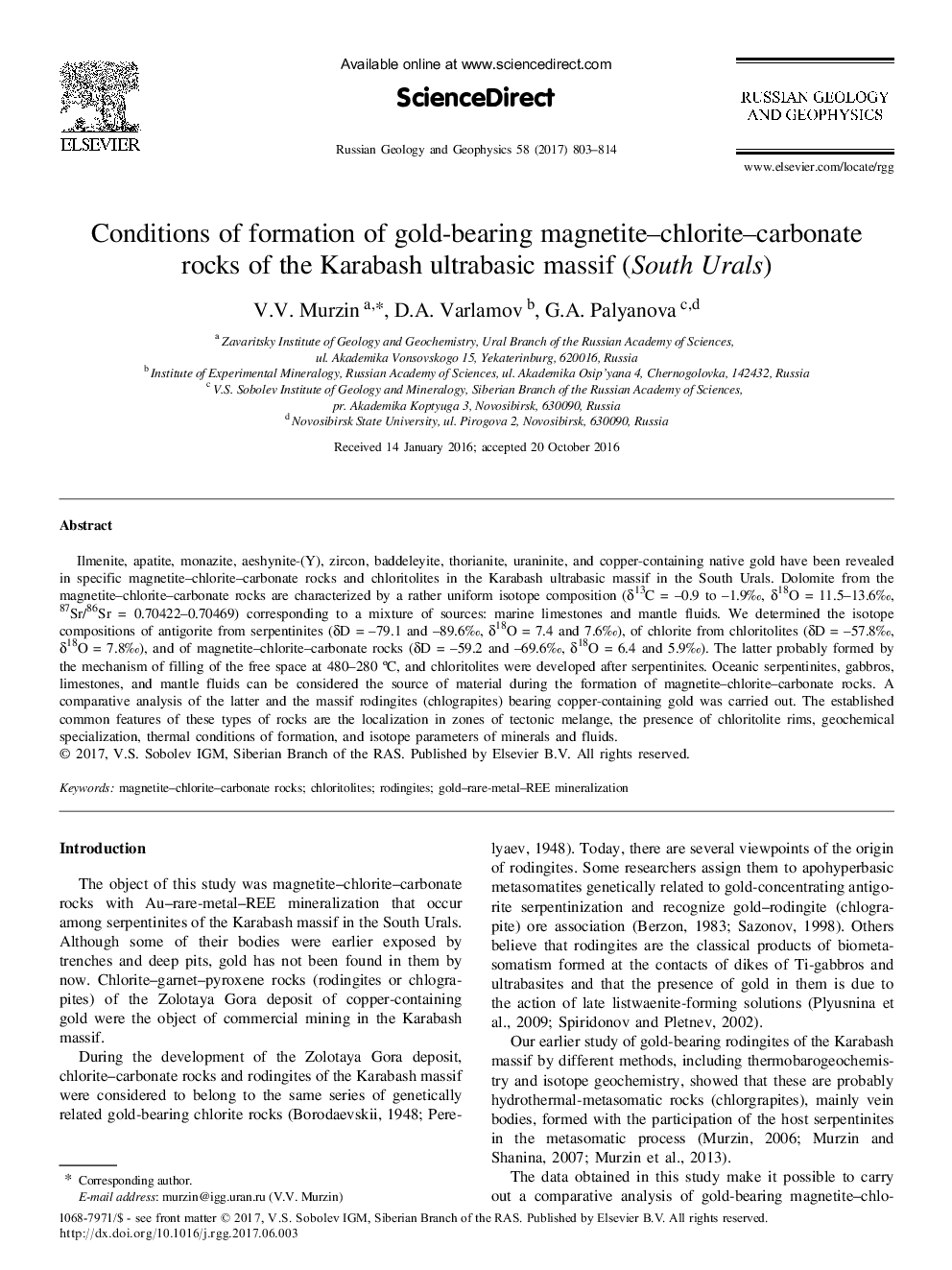| Article ID | Journal | Published Year | Pages | File Type |
|---|---|---|---|---|
| 5786974 | Russian Geology and Geophysics | 2017 | 12 Pages |
Abstract
Ilmenite, apatite, monazite, aeshynite-(Y), zircon, baddeleyite, thorianite, uraninite, and copper-containing native gold have been revealed in specific magnetite-chlorite-carbonate rocks and chloritolites in the Karabash ultrabasic massif in the South Urals. Dolomite from the magnetite-chlorite-carbonate rocks are characterized by a rather uniform isotope composition (513C = -0.9 to -1.9%c, 518O = 11.5-13.6%c, 87Sr/86Sr = 0.70422-0.70469) corresponding to a mixture of sources: marine limestones and mantle fluids. We determined the isotope compositions of antigorite from serpentinites (5D = -79.1 and -89.6%c, 518O = 7.4 and 7.6%c), of chlorite from chloritolites (5D = -57.8%c, 518O = 7.8%c), and of magnetite-chlorite-carbonate rocks (5D = -59.2 and -69.6%c, 518O = 6.4 and 5.9%c). The latter probably formed by the mechanism of filling of the free space at 480-280 °C, and chloritolites were developed after serpentinites. Oceanic serpentinites, gabbros, limestones, and mantle fluids can be considered the source of material during the formation of magnetite-chlorite-carbonate rocks. A comparative analysis of the latter and the massif rodingites (chlograpites) bearing copper-containing gold was carried out. The established common features of these types of rocks are the localization in zones of tectonic melange, the presence of chloritolite rims, geochemical specialization, thermal conditions of formation, and isotope parameters of minerals and fluids.
Related Topics
Physical Sciences and Engineering
Earth and Planetary Sciences
Geology
Authors
V.V. Murzin, D.A. Varlamov, G.A. Palyanova,
